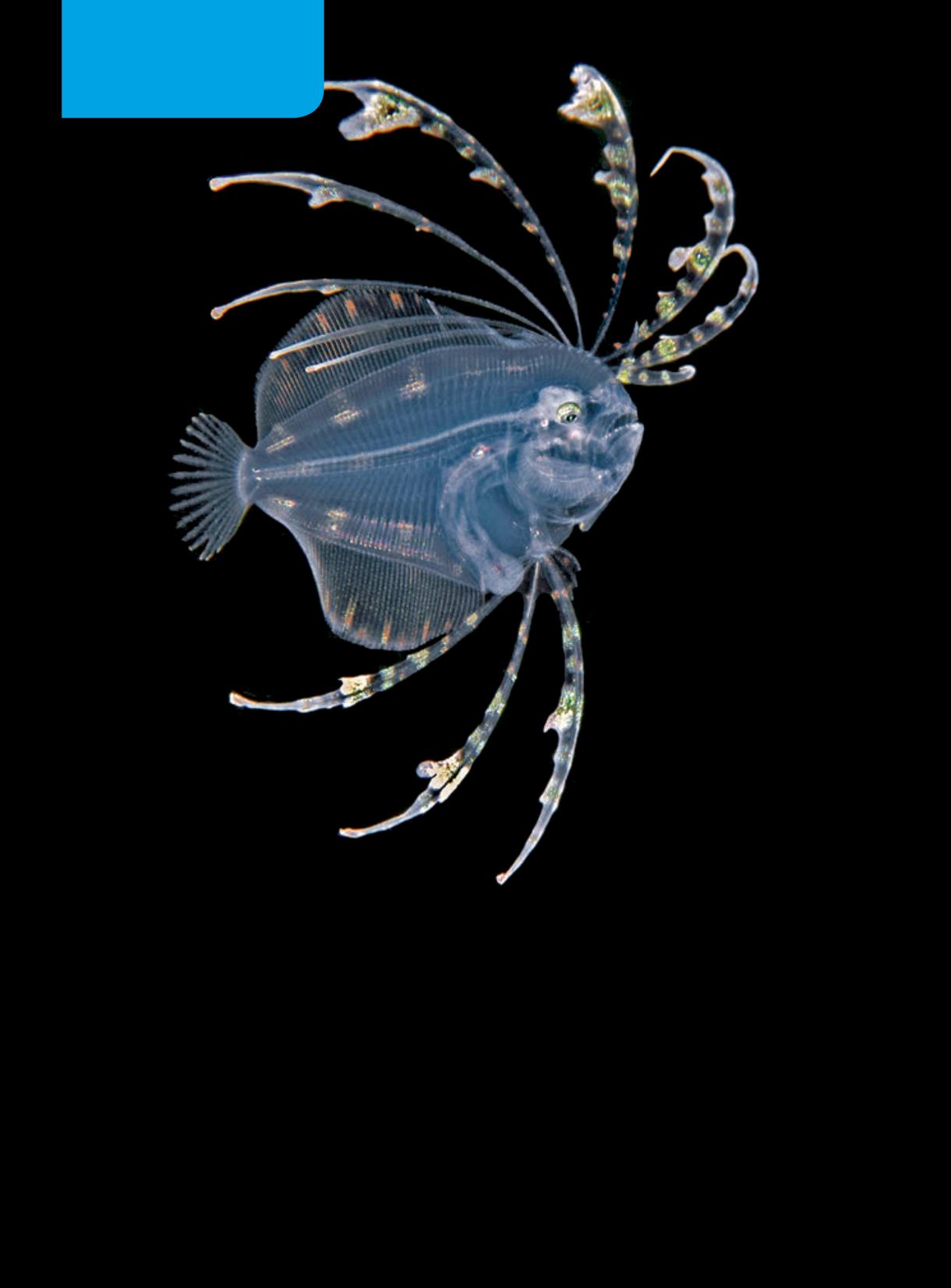

I
’m not sure how far off Palm Beach, Fla., we
are when the engines slip into neutral and a big
inflatable ball dangling 40 feet of line trimmed
with lights disappears into the night. I guess it’s
about four or five miles, and if Captain Dean’s
calculations are right, we’re positioned near the
ever-shifting edge of the Gulf Stream where marine life
congregates. While the idling boat gently bobs, a dozen
fidgety divers sit lined along benches in full gear, waiting
for the signal to bail out of the back like paratroopers.
First off the deck, Anna and I make a beeline for
the glowing down line — our mother ship for the
next hour and a half as we drift in the little-known
universe of larval sea life, the great oceanic diaspora
of the externally fertilized offspring of reef fishes and
invertebrates. The few survivors of the multiweek
metamorphosis eventually settle to the seafloor, where
they develop into their final adult forms.
Within minutes everyone is underwater and caught in
the imperceptible grip of a three- to four-knot current
that will carry us eight miles north by dive’s end. In
the interim we’re adjusting lights and acclimating our
eyes to a hazy ocean liberally flecked with organic
detritus known as marine snow. This is no game for
NIGHT DRIFTERS
34
|
WINTER 2017
ENCOUNTERS
By Ned and Anna DeLoach
Above:
Larval flounder
Opposite page, clockwise from
top left:
Larval moray eel, larval
lookdown, larval pancake batfish
NED DELOACH


















